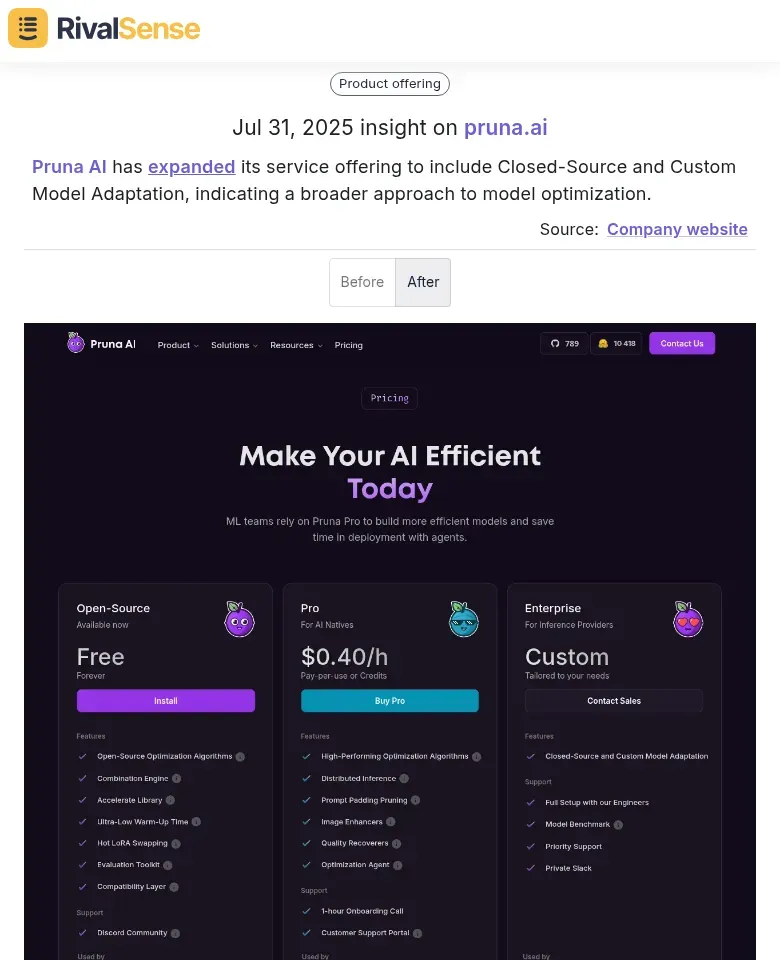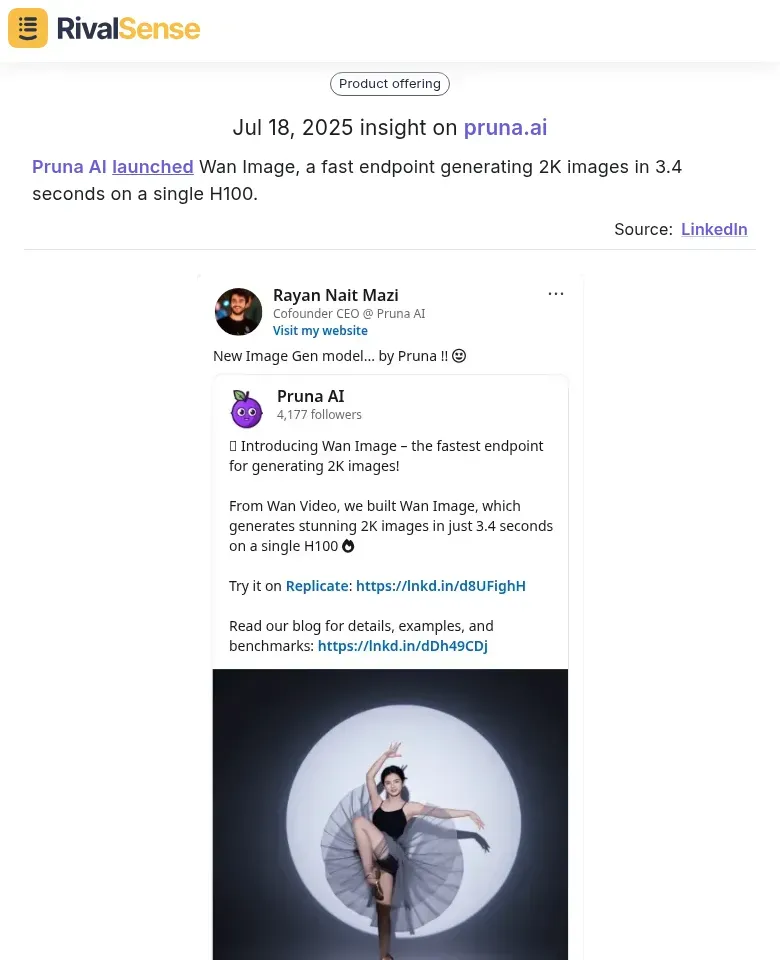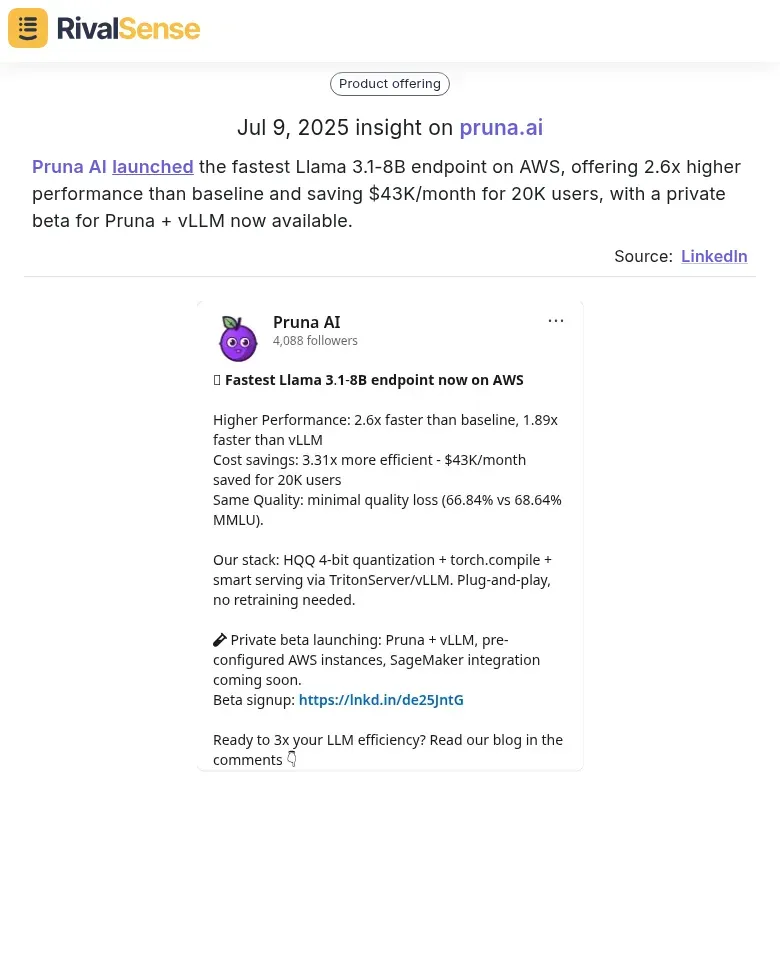Boost AI Efficiency: Productivity Hacks for Competitive Edge
In today's fast-paced digital landscape, AI efficiency isn't just a technical goal—it's a strategic imperative. Businesses that optimize their AI models gain a competitive edge by reducing operational costs, accelerating decision-making, and delivering superior customer experiences. Whether you're a startup or an enterprise, understanding how to streamline AI performance can unlock unprecedented opportunities for growth and innovation.
Optimizing AI models goes beyond mere tweaks; it involves refining algorithms, reducing computational overhead, and ensuring data quality. These improvements can lead to significant cost savings—up to 30% in some cases—while boosting accuracy and speed. For example, a well-tuned recommendation engine can increase conversion rates by personalizing user interactions in real-time.
But how do you stay ahead of the curve? One powerful strategy is leveraging competitor insights. By analyzing how industry leaders deploy AI, you can identify gaps in your own approach and adopt best practices. Tools like RivalSense help track competitor AI implementations, benchmark performance, and uncover hidden opportunities for differentiation.
✅ Practical Steps to Get Started:
- Audit Your AI Models: Identify inefficiencies in your current setup
- Benchmark Against Competitors: Use competitive intelligence tools to compare performance metrics
- Prioritize High-Impact Areas: Focus on optimizations that deliver the most value
- Iterate and Test: Continuously refine models based on real-world data
Expanding Service Offerings for Broader Model Optimization
Expanding your AI service offerings is a strategic move that can significantly enhance your competitive edge. Diversifying into areas like closed-source and custom model adaptation allows you to cater to broader client needs and market segments. This approach positions your company as a versatile leader in AI optimization while addressing varying customer requirements.
Consider how Pruna AI expanded its service offering to include Closed-Source and Custom Model Adaptation. This strategic pivot demonstrates how competitors broaden capabilities to capture diverse market segments:

Tracking such expansions reveals how competitors adapt to market demands—valuable intelligence for refining your own service roadmap. When you spot competitors diversifying offerings, it signals emerging customer needs you might address proactively.
🔧 Practical Implementation Framework:
| Step | Action | Outcome |
|---|---|---|
| 1 | Assess market needs via surveys/interviews | Identify service gaps |
| 2 | Develop expertise through training/partnerships | Build new capabilities |
| 3 | Launch pilot programs with select clients | Validate demand & gather feedback |
| 4 | Scale successful pilots | Expand revenue streams |
Enhancing Speed and Performance in AI Endpoints
In the realm of AI, speed and performance at endpoints are pivotal for user satisfaction and operational efficiency. Faster AI endpoints mean quicker responses, seamless experiences, and significant competitive advantages. Real-time capabilities like rapid image generation can transform user engagement and unlock new application possibilities.
Pruna AI's launch of Wan Image exemplifies this strategy—generating 2K images in 3.4 seconds on a single H100:

Monitoring such speed breakthroughs helps benchmark your performance targets. When competitors achieve latency reductions, it often indicates hardware/software optimizations worth reverse-engineering for your own stack.
🚀 Performance Optimization Checklist:
- Model Compression: Apply pruning/quantization to reduce size
- Hardware Acceleration: Deploy on GPUs/TPUs
- Query Caching: Store frequent requests
- Load Distribution: Prevent bottlenecks
- Real-time Monitoring: Track latency metrics
Cost-Effective AI Solutions Through Performance Optimization
Optimizing AI models for performance is a cost-saving powerhouse that directly impacts profitability. Strategic enhancements like model quantization and efficient architecture design can dramatically reduce computational expenses while maintaining output quality. Every efficiency gain compounds into significant operational savings.
Pruna AI's Llama 3.1-8B endpoint showcases this perfectly—achieving 2.6x higher performance while saving $43K/month for 20K users:

Such competitor innovations provide concrete ROI benchmarks. When rivals publicly share cost-saving metrics, it validates optimization approaches you might test in your environment.
💰 Cost-Reduction Tactics:
- Simplify architecture → Remove redundant layers
- Quantize models → Convert 32-bit→8-bit precision
- Leverage transfer learning → Reduce training costs
- Implement early stopping → Avoid unnecessary computations
- Run private betas → Refine before full deployment
Leveraging Competitor Insights for Strategic AI Development
Competitor intelligence transforms reactive planning into proactive strategy in the AI landscape. Systematic tracking of rival movements—from feature launches to pricing shifts—provides actionable insights for your own roadmap. This approach turns competitive threats into innovation catalysts.
RivalSense users gain weekly reports on competitor activities like product updates, partnerships, and tech breakthroughs. This curated intelligence helps answer critical questions: Where are competitors investing? What performance benchmarks are they hitting? Which customer segments are they targeting?
📊 Competitor Insight Integration Plan:
- Monthly competitive audits → Catalog AI feature changes
- Trend analysis → Identify focus areas (e.g., speed vs. cost)
- Gap prioritization → Address critical competitive vulnerabilities
- Agile implementation → Test improvements in sprints
Conclusion: Building a Future-Proof AI Strategy
Mastering AI efficiency requires continuous optimization across service breadth, technical performance, and cost management. By learning from competitor moves and industry benchmarks, you can accelerate your own innovation cycles while avoiding costly missteps. The most successful leaders treat AI optimization as an ongoing discipline rather than a one-time project.
Implement quarterly AI performance reviews, attend industry events, and collaborate with experts to maintain momentum. Remember: Efficiency gains compound over time, turning incremental improvements into sustainable competitive advantages.
Ready to decode competitor strategies?
👉 Try RivalSense Free to automatically track AI innovations, pricing shifts, and feature launches—and get your first competitor report today!
📚 Read more
👉 Advanced Tactics: Decoding Competitor Product Lobbying Insights
👉 Leyland's Paint Expansion: How to Respond and Stay Competitive
👉 Competitor Capability Assessment: A Step-by-Step Guide to Outperforming Your Rivals
👉 Advanced Tactics for Tracking B2B Dropshipping Competitors
